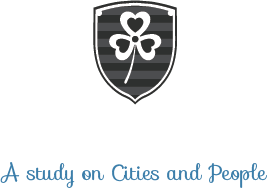How can street topology affect our perception?

Streets are the most resilient elements in a city. While buildings are replaced and property borders redrawn, the streets remain. It is also primarily from streets we perceive our urban surroundings and transport ourselves to our destination. Due to this the importance of understanding streets cannot be overstated. In this article I will attempt to better understand where people are looking in four different types of streets – Open street, Closed street, Angled street and Curved street (conceptually seen in the above image) and in the images below:






The participants are shown a Figure image picture and a Photographic image, depicting the same streetscape, as the example above. A total of 40 images are shown to the participant. Out of these 40 images there are 10 images per street type (closed, open, curved, angled), half of which are figure images and half are photographic images. 15 people participated in this experiment. The figure images allows us to draw more generalizing conclusions about how people look in different streetscapes. Below are four examples of the results, the more red, the more people focused their gaze on that general area:





It is possible to find an inherent
pattern of visual attention when people are subject to a blocked street type. This street type attracts a large amount of visual attention on the terminating building
facade and hardly any visual attention is directed to either the street turns or the surrounding building facades. The visual attention is generally distributed
on a large area on the terminating building.

Just like the blocked street type, the open street type also seem to have inherent effects on the visual attention of the subjects. The open street type focuses
the visual attention to the street termination point, and in some cases the very far-away building facades. However, it appears that most of the building facades
remain outside the point of gaze.

The curved street type attracts visual attention to the terminating point of the street as well as on the building facades along the far-away concave solids. The convex building facades and the close-by facades of the concave buildings attracts little to no visual attention.

The angled street type have a visual attention effect that is similar to the curved street type. The focus is on the exterior street turn, as well as on the part of the terminating solid facade closest to this street turn. The interior street turn and remaining part of the terminating building facade attracts comparatively less visual attention. The remaining solid facades
attracts little to no visual attention.
All four different street types presented and investigated in this thesis have shown to induce inherent patterns on the distribution of visual attention of the perceiver. However, it is important to note that even though the street types have inherent effects on visual attention, other elements can override this effect. These elements are signage and to a lesser extent people. Moreover, even though the termination points and solid facades attracts visual attention based on the street type, the lesser elements on or around these inherent areas, such as windows or subdivisions, alters how the visual attention is distributed.

